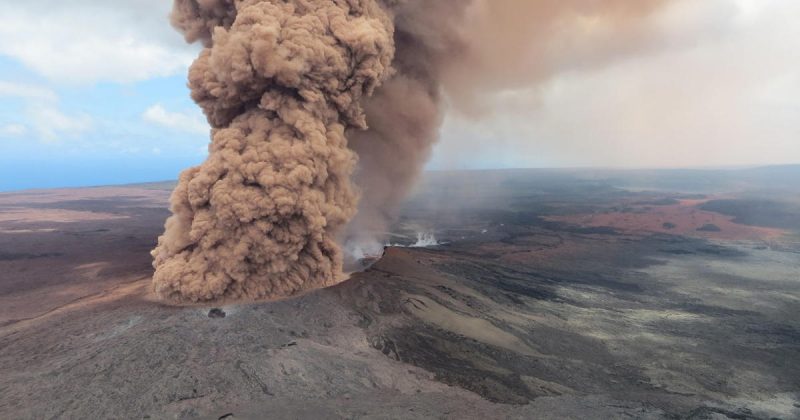
Photo courtesy of CBS News.
Summary: The volcano, Kilauea, erupted on Hawaii’s Big Island last week.
On Thursday, Hawaii’s Big Island was devastated by an eruption from Kilauea, the island’s most active volcano; and The Washington Post said that the ground split open on the east side of Leilani Estates.
Leilani Estates is a subdivision of the Big Island’s eastern Puna district, and last Thursday, the ground split open there, exposing red lava that eventually splashed dozens of feet into the air. Almost 2,000 residents were ordered to flee amidst threats of fire and sulfur dioxide gas, and soon, other fissures formed.
“As of Sunday night, at least 10 such fissure vents were reported in the neighborhood — including two that had opened anew late Saturday night — and at least 26 homes had been destroyed, according to the county civil defense agency,” The Washington Post stated.
Wendy Stovall, a volcanologist, said that lava fountains can eventually reach up to 1,000 feet.
“As the eruption progresses, there will become a preferred pathway for the magma to go through,” Stovall said to the Washington Post. “Some of the outer vents along this fissure line will start to close up and congeal because the lava is going to essentially harden.”
Some residents have had to be forced to leave because they wanted to witness the lava eruptions, but officials have said that this is dangerous.
“Please, the residents of Leilani need your help by staying out of the area,” the county civil defense agency said. “This is not the time for sightseeing.”
CNN reported that 35 structures and 26 homes have been destroyed since Kilaueu erupted on Thursday. The eruption was followed by an earthquake with a magnitude of 6.9.
On Sunday, some residents were allowed to return to their homes to retrieve pets and necessities such as important documents and medicine, but they were not allowed to stay and were warned that this return could be dangerous.
Schools on the Big Island were not canceled despite the earthquake, but education officials said that students who had evacuated from their homes would not be penalized for missing class.
“The best way to protect yourself and your family from the extremely dangerous volcanic gases is to leave the immediate area of the volcano defined by the police and fire department,” the Hawaii Department of Public Health told CNN.
This devastating natural disaster has left some people wondering if their homes would be covered by insurance, but one agent said that was unlikely.
“As far as earthquake coverage or specifically named like a volcanic eruption, no most people would not have that kind of coverage,” Marc Dixon, an Allstate insurance agent, said to Hawaii News Now.
Fortune said that while most residents do not have volcano or earthquake coverage as part of their homeowner’s policy, they may be able to make claims if their home was burned down by the lava, triggering their fire coverage.
“Because residents of the Big Island chose to move to a place that has an active volcano, insurers take the stance that they knew the risks. But there are a couple of straws of hope for those people to grasp,” Fortune said.
